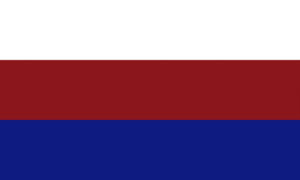Gintarian Dolch
 | |
| Languages | |
|---|---|
| Alemannisch | |
| Religion | |
| Lutheranism (majority), Catholic | |
| Related ethnic groups | |
| Dolch , Ras-Kretin |
The Gintarian or Bernstein (Alemannisch) Dolch, are a group of Dolch who historically inhabited the Litauisch Peninsula, and much of Eastern and Central Baltica. Although once being one of the largest ethnic groups in Southern Argis, they have since stagnated population wise, and although their population is at its historic peak, it's not growing at a significant rate. The first Gintarian Dolch would settle Southern Argis in the late 14th century, the first Dolch having been made up of Catholic merchants, sailors and warriors from Dolchland. This initial population would explode in the years to come, and its territorial holdings would grow rapidly due to various Crusades and holy wars. This would lead to the formation of one of the most powerful Dolch states in Southern Argis, this being the Order of Baltishtin, who had a large trade presence in the Kezanoi Sea and the Keelpijp Strait. When the Order of Baltishtin eventually transitioned into the Kingdom of Baltica, it became the new dominant Dolch state, and would subsequently continue the growth initially seen in the Order of Baltishtin. Some of the largest Dolch settlements in the region would also develop during the early 15th century, for example Goja, which would be established in 1436 and Janakis which was constructed in 1468. Unlike many of the local people, the Dolch would mainly migrate towards urban centres and their outskirts, which in many cases would cement their role as merchants and traders as well as political figure heads.
Despite their economic and political influence within Southern Argis, the Gintarian Dolch would never surpass 40% of the native population in the lands which they inhabited. For example, in the census of 1659, the Dolch population of the Kingdom of Baltica was 259,541 whilst the native Ras were numbered in the 380 thousands. In the modern day, this percentage (In Baltica at least) has fallen considerably, with Dolch only making up 21% of the population.
Ethnic Composition
Many of the Initial Dolch settlers of the Litauisch peninsula were made up from Dolch originating from the regions of modern day Habstria. Additionally some of the merchants that would temporarily reside in the region would come from free cities such as Flunderberg. Although the first Dolch of the region would be very homogeneous and only intermarry between one another, as the Order of Baltishtin would be formed and new territories annexed, the Dolch would begin to intermarry with local Southern Gintarian tribes. This was a much more common practice among female natives due to the lack of female Dolch inhabitants. In the modern day, although many Gintarian Dolch can trace their roots back to Dolchland, many are as much Gintarian as they are Dolch, with generations of intermarrying leading to a even distribution of the gene pool. However, during the formation of the Kingdom of Baltica, attempts were made to “Dolchify” the new Baltican Royal Family although such attempts ultimately came to an end once the Kingdom of Baltica unified with the Kingdom of Kretia via a marriage pact.
Territories
The Dolch have historically inhabited the Litauisch Peninsula of Baltica, and to this day, continue to be the majority population within the area. Major towns included the likes of Niden, Visagris and Janakis.
The Dolch are also the majority within the Eastern Isles, major towns including Kiule and St Bunno City.
Although the Dolch were responsible for the founding of the city of Goja, nowadays they only make up a small minority of the city.
The Provinces of Wensal and Belgorta were once also majority Dolch but have also seen large decline due to war and natural migration away from the region.
